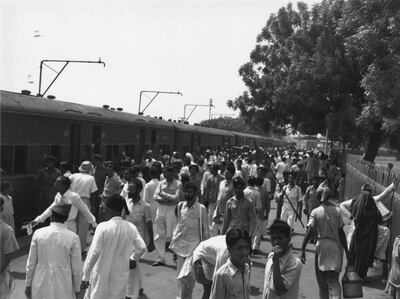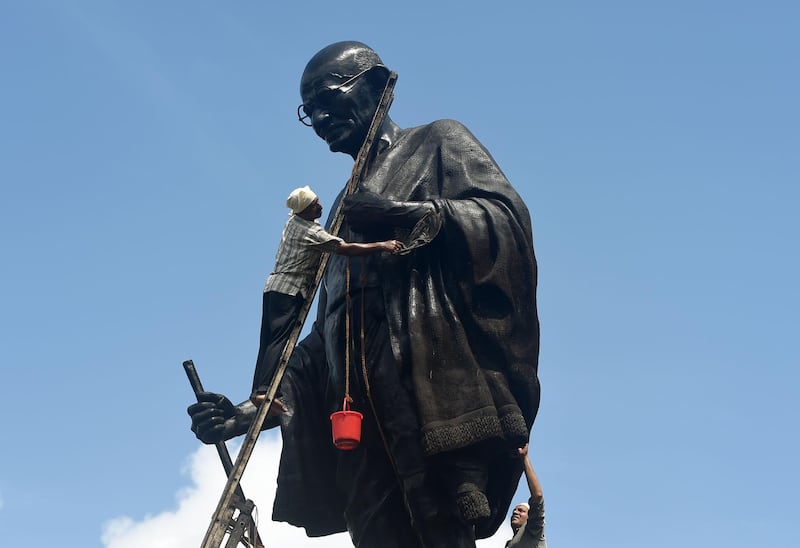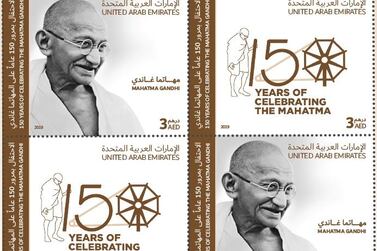Amid all the celebrations last week marking 150 years since Mohandas Gandhi was born, a more sinister ideology was lurking in the shadows. In the host of events in India and across the world remembering the Mahatma, as he is better known, there has been an underlying sadness.
For 2019 is also the year when a re-enactment video glorifying Gandhi’s assassination in 1948 went viral. Every now and then, there are reports of a shrine or temple being set up to lionise Nathuram Godse, the man who shot Gandhi at point-blank range.
So whose vision of India will determine the future – Gandhi’s or Godse’s?
This is not an abstract question being posed at academic seminars. It is an ongoing dispute in India's political discourse, which has caused many Indians to despair.
Those of us who were born in a free India and were brought up to feel proud of Gandhi’s epochal and global role are stunned by the intensity of hatred he now evokes among those who accuse him of being anti-Hindu.
Tirades against Gandhi come as a shock to those who were told by their grandparents that Gandhi’s murder was like a death in the family. On the evening of January 30, 1948, as news of Gandhi’s death spread, people in millions of homes across India shunned food because you do not eat a morsel until the body of your loved one has been cremated with reverence.
However, these collective memories tend to obscure the fact that Gandhi-haters were aplenty, even then. Acknowledging that a hatred of Gandhi is an old reality is vital. Only then can we focus on how Gandhi dealt with it in his lifetime and learn how this might make us stout of heart and more capable of countering the politics of hatred. Being able to do this effectively is clearly a need in many societies across the world.
At a time when sending hate mail meant putting pen to paper, sticking a stamp on an envelope and then finding a letter box to post the missive, Gandhi received lots of abusive letters. Most of these letters, urging him to die or containing threats, were from people who saw him as an enemy of Hindus and held him responsible for the partition of India in 1947. These haters were not deterred by the fact that Gandhi also evoked hatred among those Muslims who demanded the creation of Pakistan, which the Mahatma had consistently opposed.
Both sets of Gandhi-haters had another thing in common – a willingness to unleash the most brutal violence on each other.
Gandhi was heartbroken by the division of India and the outbreak of mass killings, which claimed the lives of an estimated two million people. In earlier years Gandhi had spoken of wanting to live until he was 125 years old so that he could continue working on the various missions dear to his heart – most of all, peace and harmony between Hindus and Muslims.

By the middle of 1947 in his daily inter-faith prayer meetings, however, Gandhi was repeatedly speaking of not wanting to live any longer. His darkest hour was caused by the realisation that some elements of Indian society never really accepted non-violence. “It was merely passive resistance,” Gandhi said at the time, “and such resistance is a weapon of the weak. Had we possessed the courage to wage a non-violent struggle – and that requires the courage of the brave – then we would have shown the world an entirely different picture of independent India. What we are presenting today, however, is an India severed into two, where brother is ranged against brother, each without an iota of trust in the other.”
Today, this is true within families, as brothers and sisters are divided over who their hero is – Gandhi or Godse. The latter group pillory Gandhi for not fasting until death to stop the partition of India and thus giving rise to what they regard as the "problem" of Pakistan.
Gandhi refused to comply because he said this demand was based on hatred, while his wish to keep India united was anchored in love. It is the distinction between love and hatred that is the essence of what set apart the two men.
Those who are driven by hatred or resentment are also obsessed with control over territory. Those who look at a conflict through the lens of love seek primarily to mend divisions and find common ground. For instance, Gandhi called himself a true Hindu and added that this was "precisely why I am also a Muslim, a Parsi, a Christian and a Jew. To me they are like branches of one tree."
This is what enabled Gandhi to remain strong in his darkest hour. Even at a time when he felt that his own practice of non-violence had failed, he retained complete confidence that as a philosophy, ahimsa – or non-violence – never could. This was not a dreamy romanticism but a firmly held belief.
For instance, Gandhi would have empathised with those who now despair because friends and relatives are leaning towards the politics of hate. Gandhi knew that the practice of non-violence could not be entirely one-sided. If the civility of the advocates of non-violence fails to improve the conduct of others and violence persists, then there is a great risk that cynicism and despair might prevail. At such a juncture, the faint of heart might be inclined to retreat because the forces of hatred and violence are louder and seem stronger. Among those who refuse to retreat or give up, many are reluctant to follow Gandhi's doctrine because he insisted that the process of "self-purification" was essential to walk the path of non-violence – a theory that might seem to some excessively taxing.
But if you look a little closer, the essence of what Gandhi was asking of us was that we give up the arrogance of strength. Self-purification for Gandhi meant nothing more or less than “inward wealth, inward organisation and inward power” – that is, a command over our own passions. Only then can an individual enjoy feeling powerful without the need to exercise or impress power upon others.
In this light, the debate of Gandhi or Godse is not only a false contest, it is also a cruel distraction.
The real choice is between arrogance masquerading as strength and a quiet self-confidence anchored in the ability to love, undaunted by waves of hate. Gandhi lived this truth.
Rajni Bakshi is a public speaker in Mumbai and the author of Bapu Kuti: Journeys in Rediscovery of Gandhi, and Bazaars, Conversations and Freedom: For a Market Culture Beyond Greed and Fear






